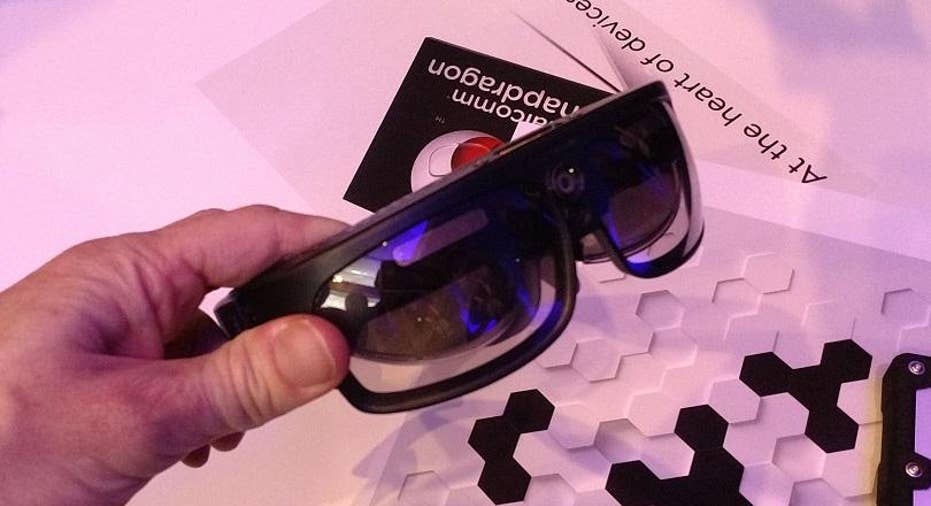CES: Looking Through Augmented Reality Glasses at Our Enterprise Future

CES is mostly about companies showing off all manner of new consumer phones, TVs, cars, laptops, and smart devices. But there are always some business innovations to be found among all of the consumer gadgets and gizmos. This year, the enterprise side of CES is all about augmented reality (AR).
A number of hardware makers rolled out AR headsets at CES designed for business and industrial use during the annual tech extravaganza in Las Vegas this week. Vuzix added to its enterprise AR headset line with its new M3000 Smart Glasses, while Lenovo made a surprise entrance into the smart glasses ring with its Lenovo New Glass C200. Resembling the ghost of Google Glass, the headset combines AR and artificial intelligence (AI) for enterprise use cases and will be available in June.
Then there's Osterhout Design Group (ODG), which announced its consumer-focused R-8 and enterprise-focused R-9 glasses running Qualcomm's new Snapdragon 835 processor. More importantly, as part of ODG's ongoing partnership with Vuforia (a widely used AR platform for software developers), the R-8 and the R-9 glasses will also support creation of other AR applications.
Jay Wright, President and General Manager of Vuforia, spoke to PCMag from Las Vegas about how the combined Vuforia software and R-9 glasses will work for enterprises. Wright has been in the AR space longer than most, originally developing and running the Vuforia platform for Qualcomm from 2008 to 2015 when it was acquired by software company PTC. He also talked about how the AR space is evolving, both from a hardware standpoint and regarding how businesses are using the technology.
Where Enterprise AR is Going in 2017
Enterprises are exploring a host of scenarios for augmented reality across both smartphone-based AR apps (think Pokemon Go) and head-mounted wearables such as Microsoft HoloLens. Wright stressed the importance of the distinction between smartphone and tablet-based AR apps and head-mounted experiences.
Concerning the former, businesses can use AR for sales, e-commerce, and marketing apps. Startups such as Augment (also built on Vuforia) are already doing that. These apps let salespeople carry around virtual inventory and superimpose a product in real space to show a client. When we get into the kind of AR headsets we're seeing at CES, Wright said they're designed more for hands-on industrial situations.
"For salespeople, AR is fundamentally a tablet story. What's more interesting is the industrial side of AR: getting rid of service manuals and work instructions and diagrams on pages in favor of self-guided 3D instructions in AR," explained Wright. "For this to be viable for industrial enterprise, you've got to have a device on your head. These workers are doing jobs with their hands and they need them free."
ODG has been working with Vuforia since 2014, using previous iterations of the AR glasses such as the R-7 for apps that give BMW drivers augmented vision, including the ability to see through the passenger side door when parking the car. Wright said the industry has been missing an all-in-one AR device for industrial enterprise that can actually be deployed, but he calls the R-9 glasses a huge step in the right direction—one that could ultimately help get rid of written manuals used by technicians, designers, engineers, and other technically-oriented workers.
"The R-9 is much lighter and gives you a greater field overview with the Snapdragon 835 and much higher processing loads. We can do a lot more on those glasses, with a better experience and richer content than in the past," said Wright. "Then the great thing about Vuforia is, it's very easy to take apps written for tablets or phones and adapt them for use on the ODG glasses. I imagine there are enterprise customers looking forward to trying on these glasses not just for service or instructions on how to repair a machine, but for things like assembly, construction, and various forms of diagnostics."
PCMag analyst Sascha Segan trying on the ODG R-9 glasses at CES.
Microsoft, ODG, Vuzix, and Lenovo are only some of the players that are building business-focused AR glasses. When looking at the larger hardware industry around enterprise AR, Wright said the space can be segmented into two types of glasses: binocular and monocular.
Binocular glasses with displays in both eyes allow you to see 3D content aligned with the physical world. HoloLens and Magic Leap are good examples, though Magic Leap's much-hyped technology has avoided announcing a release date long enough that many use it an example of how difficult binocular AR experiences can be to create.
Monocular glasses, such as Google Glass and the Lenovo and Vuzix headsets mentioned earlier, give you a display just outside your field of view. The display gives you information about what you're looking at but the objects are not aligned with the underlying world. This coming year, Wright said we'll see more enterprise AR development on the monocular side because, for the most part, binocular devices simply aren't there yet. But he said, in the long run, it's all about mixed reality.
"Glasses like R-9 are a step in the right direction for all-in-one devices and a big sign of things to come," said Wright, "but we'll continue to see evolution on both of these trajectories, fueled by tremendous innovation from multiple manufacturers.
"A lot of it is being driven by a simple question: What comes after smartphones, what's the next device? That has spurred a lot of investment over the past two years now reflected in what's coming to market. I expect this to heat up even further as we explore more monocular and binocular uses but, over time, the experience that gets most people's hearts beating fast is the binocular experience of seeing content overlaid and aligned with the physical world."
This article originally appeared on PCMag.com.



















